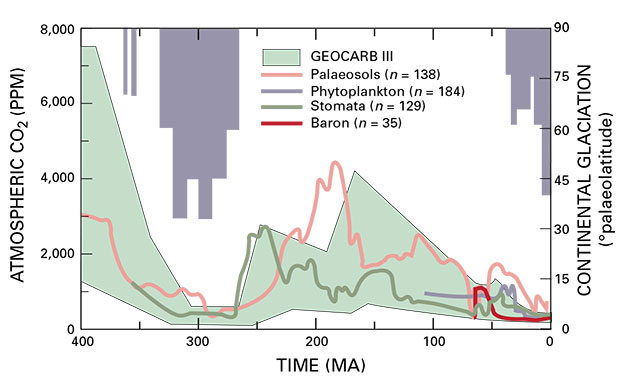The Big Picture 2
Let's return to the figure showing the broad histories of atmospheric CO2 (with estimates from different techniques shown by different lines plus the shaded band at the bottom), and of ice on the planet (glaciers extending farther toward the equator are shown by longer bars hanging down from the top). Clearly, CO2 and ice moved in opposite directions, with rising CO2 occurring with melting ice. The figure has been “smoothed”, and so doesn’t show the details of the shorter-lived events discussed just above.

By themselves, the correlations just discussed between CO2 and temperature do not prove that CO2 caused the warmth. But, straightforward physics shows the warming effect of CO2. And, although warming can raise CO2 over short times, as at the start of the PETM or the ends of the ice ages, over long times warming lowers CO2 by causing faster rock weathering and fossil-fuel formation. Thus, the prolonged high levels of CO2 during warm times were not caused by the hot climate; instead, such high levels were caused by faster volcanism, or thicker soils slowing access of CO2 to react with rocks, or other geological reasons.
The physics, and the lack of other plausible causes despite major efforts to find something, show that the warmth was caused by the CO2. Testing our understanding by “retrodicting” what happened—starting with the causes and simulating the effects of the climate changes—shows that our models work well. If there is a problem, the world has changed a little more in response to CO2 than expected from the models.
